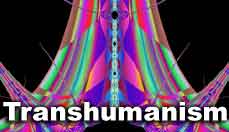Alex Linder Audio Books
Open Letters
Yggdrasil's Library
THE ORION PARTY
The Prometheus League
- Humanity Needs A World Government PDF
- Cosmos Theology Essay PDF
- Cosmos Theology Booklet PDF
- Europe Destiny Essays PDF
- Historical Parallels PDF
- Christianity Examined PDF
News Blogs
Euvolution
- Home Page
- Pierre Teilhard De Chardin
- Library of Eugenics
- Genetic Revolution News
- Science
- Philosophy
- Politics
- Nationalism
- Cosmic Heaven
- Eugenics
- Future Art Gallery
- NeoEugenics
- Contact Us
- About the Website
- Site Map
Transhumanism News
Partners




Sources of Human Psychological Differences
Sources of human psychological differences: the Minnesota study of twins
reared apart.
Thomas J. Bouchard Jr.; David T. Lykken; Matthew McGue; Nancy L. Segal;
Auke Tellegen Science, Oct 12, 1990 v250 n4978 p223(6)
Since 1979, a continuing study of monozygotic and dizygotic twins,
separated in infancy and reared apart, has subjected more than 100 sets of
reared-apart twins or triplets to a week of intensive psychological and
physiological assessment. Like the prior, smaller studies of monozygotic twins
reared apart, about 70% of the variance in IQ was found to be associated with
genetic variation. On multiple measures of personality and temperament,
occupational and leisure-time interests, and social attitudes, monozygotic
twins reared apart are about as similar as are monozygotic twins reared
together. These findings extend and support those from numerous other twin,
family, and adoption studies. It is a plausible hypothesis that genetic
differences affect psychological differences largely indirectly, by
influencing the effective environment of the developing child. This evidence
for the strong heritability of most psychological traits, sensibly construed,
does not detract from the value or importance of parenting, education, and
other propaedeutic interventions.
Monozygotic and dizygotic twins who were separated early in life and reared
apart (MZA and DZA twin pairs) are a fascinating experiment of nature. They
also provide the simplest and most powerful method for disentangling the
influence of environmental and genetic factors on human characteristics. The
rarity of twins reared apart explains why only three previous studies of
modest scope are available in the literature [1-4].
More than 100 sets of reared-apart twins or triplets from across the United
States and the United Kingdom have participated in the Minnesota Study of
Twins Reared Apart since it began in 1979. Participants have also come from
Australia, Canada, China, New Zealand, Sweden, and West Germany. The study of
these reared-apart twins has led to two general and seemingly remarkable
conclusions concerning the sources of the psychological differences -
behavioral variation - between people: (i) generic factors exert a pronounced
and pervasive influence on behavioral variability, and (ii) the effect of
being reared in the same home is negligible for many psychological traits.
These conclusions will not come as revelations to the many behavioral
geneticists who have observed similar results and drawn similar conclusions
[5]. This study and the broader behavioral genetic literature, nevertheless,
challenge prevailing psychological theories on the origins of individual
differences in ability, personality, interests, and social attitudes [6]. Here
we summarize our procedures and review our results and interpretations of
them.
Participants complete approximately 50 hours of medical and psychological
assessment. Two or more test instruments are used in each major domain of
psychological assessment to ensure adequate coverage (for example, four
personality trait inventories, three occupational interest inventories, and
two mental ability batteries). A systematic assessment of aspects of the
twin's rearing environments that might have had causal roles in their
psychological development is also carried out. Separate examiners administer
the IQ test, life history interview, psychiatric interview, and sexual life
history interview. A comprehensive mental ability battery is administered as a
group test. The twins also complete questionnaires independently, under the
constant supervision of a staff member.
Reared-apart twins have been ascertained in several ways, such as: (i)
friends, relatives, or the reunited twins themselves, having learned of the
project, contact the Minnesota Center for Twin and Adoption Research (MICTAR);
(ii) members of the adoption movement, social workers, and other professionals
who encounter reared-apart twins serve as intermediaries; (iii) twins who are,
or become aware of, a separated co-twin solicit assistance from the MICTAR
staff in locating this individual. Selection on the basis of similarity is
minimized by vigorously recruiting all reared-apart twins, regardless of known
or presumed zygosity and similarity. We have been unable to recruit to the
study six pairs of twins reared apart whom we believe to be monozygotic.
Zygosity diagnosis is based on extensive serological comparisons,
fingerprint ridge count, and anthropometric measurements. The probability of
misclassification is less than 0.001 [7]. Where appropriate, our data are
corrected for age and sex effects [8]. Due to space limitations and the
smaller size of the DZA sample (30 sets), in this article we focus on the MZA
data (56 sets). The results reported here are, for the most part, based on
previously reported findings, so that the sample sizes do not include the most
recently assessed pairs and vary depending on when in the course of this
ongoing study the analyses were conducted.
As shown in Table 1, the sample consists of adult twins, separated very
early in life, reared apart during their formative years, and reunited as
adults. Circumstances of adoption were sometimes informal, and the adoptive
parents, in comparison to parents who volunteer to participate in most
adoption studies, have a lower level of education (mean equals 2 years of high
school), and are quite heterogeneous in educational attainment and
socioeconomic status (SES). Because our sample includes no subjects with IQs
in the retardate range ([is less than or equal to] 70), the mean IQ is higher
and the standard deviation lower than for the general population.
[Tabular Data Omitted]
Components of Phenotypic Variance
If genetic and environmental factors are uncorrelated and combine
additively (points we return to later), the total observed variance,
[V.sub.t], of a trait within a population can be expressed as
[V.sub.t] = [[V.sub.g] + [V.sub.e] + [V.sub.m]
where [V.sub.g] is variance due to genetic differences among people,
[V.sub.e] is variance due to environmental or experiential factors, and
[V.sub.m] is variance due to measurement error and unsystematic temporal
fluctuations. For measures of psychological traits, [V.sub.m] ranges from
approximately 10% (of [V.sub.t]) for the most reliably measured and stable of
traits (for example, IQ) to as high as 50 to 60% for traits that are less
reliable or that show considerable secular instability (for example, some
social attitudes). The environmental component, [V.sub.e], can be divided into
variance due to experiences that are shared, [V.sub.es], and experiences that
are unshared, [V.sub.eu]. Shared events may be experienced differently by two
siblings (for example, a roller coaster ride or a family vacation), in which
case they contribute to the [V.sub.eu] component. If the total variance,
[V.sub.t], is set at unity, the correlation between MZ twins, [R.sub.mz],
equals [V.sub.g] + [V.sub.es]. The heritability of a trait equals [V.sub.g];
the heritability of the stable component of a trait (for example, the mean
value around which one's aggressiveness varies) equals [V.sub.g]/([V.sub.t] -
[V.sub.m]). [V.sub.t] and [V.sub.m] can be estimated from studies singletons,
but [V.sub.g] is more elusive: for monozygotic twins reared together (MZT),
some of the within-pair correlation might be due to effects of shared
experience, [V.sub.es]. The power of the MZA design is that for twins reared
apart from early infancy and randomly placed for adoption, [V.sub.es] is
negligible, so that [V.sub.g] can be directly estimated from the MZA
correlation.
Similarity in the IQ of MZA Twins
The study of IQ is paradigmatic of human behavior genetic research. There
are more than 100 relevant twin, adoptee, and family studies of IQ, and IQ has
been at the center of the nature-nurture debate [9]. The analysis of IQ is
also paradigmatic of the approach taken by this study. It illustrates our use
of replicated measures, evaluation of rearing environmental effects, and
analysis of environmental similarity. We obtain three independent measures of
IQ: (i) the Wechsler Adult Intelligence Scale (WAIS); (ii) a Raven, Mill-Hill
composite; and (iii) the first principal component (PC) of two multiple
abilities batteries.
The WAIS consists of a set of six verbal and five performance subtests
that are individually administered, requiring about 1.5 hours, and that yield
an age-corrected estimate of IQ [10]. To avoid examiner bias, we administer
the WAIS simultaneously to the twins in different rooms by professional
psychometrists. The Raven Progressive Matrices (Standard Set) is a widely used
nonverbal measure of problem-solving ability often paired with the Mill-Hill
Vocabulary Test, a multiple-choice word knowledge test [11]. In this study,
the Raven and Mill-Hill are both administered and scored by computer. The two
ageand sex-corrected scores are transformed to have a mean equal to 50 and a
standard deviation of 10. The sum of these transformed scores (which
intercorrelate about 0.57) provides a separate estimate of IQ. The first major
ability battery included in our assessment is an expanded version of the
battery used in the Hawaii Family Study of Cognition [12]. The second major
ability battery is the Comprehensive Ability Battery [13]. Detailed results
from analysis of both tests are reported elsewhere [14].
In each of the three prior studies of MZA twins, two independent estimates
of intelligence were obtained. The sample sizes and intraclass correlations
for all four studies are compared in Table 2. The table illustrates the
remarkable consistency of the MZA correlations on IQ across measurement
instrument, country of origin, and time period. These correlations vary within
a narrow range (0.64 to 0.74) and suggest, under the assumption of no
environmental similarity, that genetic factors account for approximately 70%
of the variance in IQ.
This estimate of the broad heritability of IQ is higher than the recent
estimates (0.47 to 0.58) based on a review of the literature that includes all
kinship pairings [9, 15]. Virtually the entire literature on IQ similarity in
twins and siblings is limited, however, to studies of children and
adolescents. It has been demonstrated [16] that heritability of cognitive
ability increases with age. A heritability estimate of approximately 70% from
these four studies of mainly middle-aged adults is not inconsistent with the
previous literature.
Do Environmental Similarities in Rearing
Environments Explain MZA IQ Similarity?
Such marked behavioral similarities between reared-apart MZ twins raise
the question of correlated placement: were the twins' adoptive homes selected
to be similar in trait-relevant features which, in turn, induced psychological
similarity? If so, given that the total variance equals 1.0, then [V.sub.es]
will equal at least [R.sub.ff] X [r.sub.ft.sup.2], where [R.sub.ff] is the
within-pair correlation for a given feature, f, of the adoptive homes (the
placement coefficient), and [r.sub.ft] is the product-moment correlation
between the feature and the trait in question, t.
A checklist of available household facilities (for example, power tools,
sailboat, telescope, unabridged dictionary, and original artwork) provides an
index of the cultural and intellectual resources in the adoptive home [17].
Each twin completes the Moos Family Environment Scale (FES), a widely used
instrument with scales describing the individual's retrospective impression of
treatment and rearing provided by the adoptive parents during childhood and
adolescence [18]. The age- and sex-corrected placement coefficients for these
and other measures are shown in Table 3, together with the correlations
between twins' IQ and the environmental measure ([r.sub.ft]) and the total
estimated contribution to MZA twin similarity. The maximum contribution to MZA
trait correlations that could be explained by measured similarity of the
adoptive rearing environments on a single variable is about 0.03(19). The
absence of any significant effect due to SES or other environmental measures
on the IQ scores of these adult adopted twins is consistent with the findings
of other investigators [20]. Rearing SES effects on IQ in adoption studies
have been found for young children but not in adult samples [21], suggesting
that although parents may be able to affect their children's rate of cognitive
skill acquisition, they may have relatively little influence on the ultimate
level attained.
[Tabular Data Omitted]
Has Pre- and Post-Reunion Contact Contributed to MZA Twin Similarity in
IQ?
MZA twins share prenatal and perinatal environments, but except for
effects of actual trauma, such as fetal alcohol syndrome, there is little
evidence that early shared environment significantly contributes to the
variance of psychological traits. Twins are especially vulnerable to prenatal
and perinatal trauma, but these effects are most likely to decrease, rather
than increase, within-pair similarity [22]. There is evidence that twins who
maintain closer contact with each other later in life tend to be more similar
in some respects than twins who engage in infrequent contact [23]. It appears,
however, that it is the similarity that leads to increased contact, rather
than the other way around [24]. MZA twins in this study vary widely in the
amount of contact they have had prior to assessment. All twin pairs spend
their formative years apart. Some had their first adult reunion at the time of
assessment, whereas others met as much as 20 years earlier and had experienced
varying degrees of contact. A small number of the pair actually met at
intervals during childhood. As shown in Table 1, total contact time for the
MZA twins ranges from 1 to 1233 weeks. In the one case of 1223 weeks of
contact, the twins met as teenagers and lived near each other until assessment
when they were adults. Since they met on a regular basis, most of this time
was coded as contact time. Degree of social contact between two members of a
reared-apart twin pair accounts for virtually none of their similarity. The
correlations with the within-pair absolute WAIS IQ difference are 0.06 [+ or
-] 0.15 for time together prior to separation, 0.08 [+ or -] 0.15 for time
apart to first reunion, -0.14 [+ or -] 0.15 for total contact time, and 0.17
[+ or -] 0.15 for percentage of lifetime spent apart(25).
The absolute within-pair difference in WAIS IQ of co-twins as a function
of degree of contact are plotted in Fig. 1. Also shown are the expected
absolute IQ differences between randomly paired individuals and between two
testings of the same individual(26). Although the MZA average difference
approximates the absolute difference expected between two testings of a single
individual, we do observe a wide range of differences. It is not that we have
found no evidence of environmental influence; in individual cases
environmental factors have been highly significant (for example, the 29 IQ
point difference in Fig. 1). Rather, we find little support for the types of
environmental influences on which psychologists have traditionally focused
[27].
Similarity of MZA Twins on a Variety of Dimensions
Table 4 [28] gives the MZA correlations, most previously published, on
variables ranging from anthropometry and psychophysiology, to aptitudes,
personality and temperament, leisure-time and vocational interests, to social
attitudes. Correlations for MZT twins and retest stability coefficients are
also provided for comparison Stable, reliably measured variables like
fingerprint ridge count and stature show the highest correlations. Brain wave
spectra are highly reproducible [29] and are strongly correlated in both MZA
and MZT twins. Most other psychophysiological variables (for example, blood
pressure and electrodermal response) vary considerably across time so that the
retest correlations between repeated measurements on the same persons range
from 0.5 to 0.8(30). These retest correlations set the upper limit of
similarity that might be found between MZ co-twins. The retest stability of
aptitude measures, such as IQ, is rather better, ranging from 0.8 to 0.9 [10],
whereas stability of personality and interest measures ranges from 0.6 to 0.7.
[Tabular Data Omitted]
With these upper limits in mind, the findings in Table 4 demonstrate
remarkable similarity between MZA twins. In terms of standardized tests and
measures, the MZA twin similarities are often nearly equal to those for MZT
twins (last column) and constitute a substantial portion of the reliable
variance (column 5) of each trait.
The Minimal Effect of Being Reared Together
Some of the MZA twins have had considerable contact as adults, but all of
them were reared apart throughout the formative periods of childhood and
adolescence. If being reared together enhances similarity in twins,
within-pair correlations for MZA twins are expected to be smaller than those
for MZT twins. For example, the mean MZT correlation for IQ, based on 34
studies of primarily children or adolescents, is 0.86 [9] as compared to 0.72
for all, primarily adult, MZA twins. If the mean MZT correlation were
maintained into adulthood, its difference from the MZA correlation would
suggest that common rearing increases the similarity of IQ in twins (and
siblings). However, the MZT correlation apparently declines with age (for
example, as a result of the accumulation of nonshared environmental effects)
[16], in which even the small MZT-MZA correlation difference would suggest
little influence of common rearing on adult IQ. In any case, a significant
contribution of shared environment is found for the personality trait of
social closeness(31), and possibly religious interests and values (32).
As illustrated in Table 4, however, adult MZ twins are about equally
similar on most physiological and psychological traits, regardless of rearing
status. This finding and the failure to find significant [r.sub.ft] effects
for cognitive abilities [17] or personality (31), together with findings from
numerous studies of MZT and DZT twins, sibs, and foster sibs, implies that
common rearing enhances familial resemblance during adulthood only slightly
and on relatively few behavioral dimensions. This conclusion is given detail
discussion by Plomin and Daniels [5].
[Tabular Data Omitted]
Why Are MZA Twins So Similar?
It is well known to naturalists and to animal breeders that there are wide
and heritable differences in behavior within other species, but there is a
curious reluctance among some scientists [33] to acknowledge the contribution
of genetic variation to psychological differences within the human species.
Our findings support and extend those from many family, twin, and adoption
studies [15], a broad consilience of findings leading to the following
generalization: For almost every behavioral trait so far investigated, from
reaction time to religiosity, an important fraction of the variation among
people turns out to be associated with genetic variation. This fact need no
longer be subject to debate [34]; rather, it is time instead to consider its
implications. We suggest the following:
1. General intelligence or IQ is strongly affected by genetic factors. The
IQs of the adult MZA twins assessed with various instruments in four
independent studies correlate about 0.70, indicating that about 70% of the
observed variation in IQ in this population can be attributed to genetic
variation. Since only a few of these MZA twins were reared in real poverty or
by illiterate parents and none were retarded, this heritability estimate
should not be extrapolated to the extremes of environmental disadvantage still
encountered in society. Moreover, these findings do not imply that traits like
IQ cannot be enhanced. Flynn [35], in a survey covering 14 countries, has
shown that the average IQ test score has significantly increased in recent
years. This increase may be limited to that part of the population with low
IQs [36]. The present findings, therefore, do not define or limit what might
be conceivably achieved in an optimal environment. They do indicate that, in
the current environments of the broad middle-class, in industrialized
societies, two-thirds of the observed variance of IQ can be traced to genetic
variation. 2. The institutions and practices of modern Western society do not
greatly constrain the development of individual differences in psychological
traits. The heritability of a psychological trait reveals as much about the
culture as it does about human nature. Heritability must increase as
[V.sub.e], the variance affected by the environment, decreases. Where the
culture's influence is relatively homogeneous and efficacious, [V.sub.e] will
decrease and heritability will increase; most American boys, for example, have
similar opportunities to play baseball, so that one expects heritability of
baseball skill in American young men to be high. Where culture is efficacious,
but heterogeneous, [V.sub.e] (and total phenotypic variance) will increase;
thus, one would expect the heritability of specific linguistic o religious
behaviors in the United States or in the Soviet Union to be low. Individuals
in Western societies are heterogeneous with respect to personality traits,
interests, and attitudes, yet the heritabilities of these traits are
relatively high. We infer that the diverse cultural agents of our society, in
particular most parents, are less effective in imprinting their distinctive
stamp on the children developing within their spheres of influence - or are
less inclined to do so - than has been supposed.
Psychologists have been surprised by the evidence that being reared by the
same parents in the same physical environment does not, on average, make
siblings more alike as adults than they would have been if reared separately
in adoptive homes. It is obvious that parents can produce shared effects if
they grossly deprive or mistreat all their children. It seems reasonable that
charismatic, dedicated parents, determined to make all their children share
certain personal qualities, interests, or values, may sometimes succeed. Our
findings, and those of others [37], do not imply that parenting is without
lasting effects. The remarkable similarity in MZA twins in social attitudes
(for example, traditionalism and religiosity) does not show that parents
cannot influence those traits, but simply that this does not tend to happen in
most families.
3. MZA twins are so similar in psychological traits because their
identical genomes make it probable that their effective environments are
similar. Specific mechanisms by which genetic differences in human behavior
are expressed in phenotypic differences are largely unknown. It is a plausible
conjecture that a key mechanism by which the genes affect the mind is
indirect, and that genetic differences have an important role in determining
the effective psychological environment of the developing child [38].
Infants with different temperaments elicit different parenting responses.
Toddlers who are active and adventurous undergo different experiences than
their more sedentary or timid siblings. In addition, children and adolescents
seek out environments that they find congenial. These are forms of
gene-environment covariance, [C.sub.ge]. Moreover, different individuals pay
different attention to or respond differently to the same objective
experience, or both. These are forms of gene-environment interaction,
[V.sub.ge]. From infancy onwards, genetic individually helps to steer the
developing organism through the multitude of possible experiences and choices.
That is, Eq. 1 must be elaborated to include these indirect and modifiable
ways in which the genome exerts its influence
[V.sub.t] = [V.sub.g] + [V.sub.e] + [C.sub.ge] + [V.sub.ge] + [V.sub.m]
The proximal cause of most psychological variance probably involves
learning through experience, just as radical environmentalists have always
believed. The effective experience, however, to an important extent are
self-selected, and that selection is guided by the steady pressure of the
genome (a more distal cause). We agree with Martin et al. [39] who see "humans
as exploring organisms whose innate abilities and predispositions help them
select what is relevant and adaptive from the range of opportunities and
stimuli presented in the environment. The effects of mobility and learning,
therefore, augment rather than eradicate the effects of the genotype on
behavior" (p. 4368).
In this view is correct, the development experiences MZ twins are more
similar than those of DZ twins, again and environmentalist critics of twin
research have contended. However, even MZA twins tend to elicit, select, seek
out or create very similar effective environments and, to that extent, the
impact of these experiences is counted as a genetic influence. Finally, if the
genome impresses itself on the psyche largely by influencing the character,
selection, and impact of experiences during development - if the correct
formula is nature via nurture - then intervention is not precluded even for
highly heritable traits, but should be the more effective when tailored to
each specific child's talents and inclinations. Relevance to Evolutionary
Psychology and Sociobiology
This research focuses on individual differences, but like other animals we
share certain species-specific tendencies by virtue of our being human.
Whereas behavioral geneticists study variatins within a species, evolutionary
psychologists or sociobiologists attempt to delineate species-typical
proclivities or instincts and to understand the relevant evolutionary
developments that took place in the Pleistocene epoch and were adaptive in the
lives of tribal hunter-gatherers. The genes sing a prehistoric song that today
should sometimes be resisted but which it would be foolish to ignore.'
At the interface of behavioral genetics and sociobiology is the question
of the origin and function, if any, of the within-species variability we have
been discussing. One view is that it represents evolutionary debris [40],
unimportant to fitness and perhaps not expressed in prehistoric environments.
Another view is that variability has an adaptive function and has been
selected for. Whether sociobiologists can make evolutionary sense of the
varieties of human genetic variation we have discussed here remains to be seen
[41].
Whatever the ancient origins and functions of genetic variability, its
repercussions in contemporary society are pervasive and important. A human
species whose members did not vary genetically with respect to significant
cognitive and motivational attributes, and who were uniformly average by
current standards, would have created a very different society than the one we
know. Modern society not only augments the influence of genotype on behavioral
variability as we have suggested, but permits this variability to reciprocally
contribute to the rapid pace of cultural change. If genetic variation was
evolutionary debris at the end of the Pleistocene, it is now a salient and
essential feature of the human condition.
REFERENCES AND NOTES
[1.] H.H. Newman F. N. Freeman, K. J. Holzinger, Twins: A Study of
Heredity and Environment (Univ. of Chicago Press, Chicago, 1937); N.
Juel-Nielson, Acta Psychiatr. Neurol. Scand. Suppl. 183 (1965); J. Shields,
Monozygotic Twins: Brought up Apart and Brought up Together (Oxford Univ.
Press, London, 1962).
There are two other ongoing studies of twins reared apart, one in Sweden
(2) and one in Finland (3). The questionable study by Burt (4) has been
omitted.
[2.] N. Pedersen, G. E. McClearn, R. Plomin, L. Friberg, Behav. Genet. 15,
407 (1985); R. Plomin, P. Lichtenstein, N. L. Pederson, G. E. McClean, J. R.
Nesselroade, Psychol. Aging 5, 25 (1990).
[3.] H. Langainvainio, J. Kaprio, M. Koskenvuo, J. Lonnqvist, Acta Gene t.
Med. Gemellol. 33, 259 (1984).
[4.] L. Hearnsahw, Cyrill Burt: Psychologist (Hodder & Stoughten, Londo n,
1979); but see R. B. Joynson, The Burt Affair (Routledge, London, 1990).
[5.] R. Plomin and D. Daniels, Behav. Brain Sci. 10, 1 (1987); L. J. Ea
ves, H. J. Eysenck, N. G. Martin, Genes Culture and Personality: An Empirical
Approach (Academic Press, New York, 1989).
[6.] T. J. Bouchard, Jr., in The Chemical and Biological Bases of Indiv
iduality, S. Fox, Ed. (Plenum, New York, 1984), p. 147; N. L. Segal, W. M.
Grove, T. J. Bouchard, Jr., in Genetic Issues in Psychosocial Epidemiology, M.
Tsuang, K. Kendler, M. Lyons, Eds. (Rutgers Univ. Press, New Brunswick, NJ, in
press).
[7.] D. T. Lykken, Behav. Genet. 8, 437 (1978).
[8.] M. McGue and T. J. Bouchard, Jr., ibid. 14, 325 (1984).
[9.] T. J. Bouchard, Jr., and M. McGue, Science 212, 1055 (1981).
[10.] J. D. Matarazzo, Wechsler's Measurement and Appraisal of Adult
Intelligence (Williams and Wilkins, Baltimore, ed. 5, 1972).
[11.] J. Raven, Manual for Raven's Progressive Matrices and Vocabulary
Scales (Lewis, London, 1986).
[12.] J. C. DeFries et al., Behav. Genet. 9, 23 (1979).
[13.] A. R. Hakstian and R. B. Cattell, J. Educ. Psychol. 70, 657 (1978).
[14.] T. J. Bouchard, Jr., N. L. Segal, D.T. Lykken, Ada Genet. Med.
Gemellol. 39, 193 (1990).
[15.] J. C. Loehlin, Am. Psychol. 44, 1285 (1989); R. Plomin and J. C.
Loehlin, Behav. Genet. 19, 331 (1989).
[16.] K. McCartney, M. J. Harris, F. Bernieri, Psychol. Bull. 107, 26
(1990).
[17.] M. McGue and T. J. Bouchard, Jr., in Advances in the Psychology of
Human Intelligence, R. J. Sternberg, Ed. (Erlbaum, New York, 1989), vol. 5, p.
7. This checklist yields four relatively independent scales: scientific or
technical, cultural, mechanical, and material possessions.
[18.] R. H. Moos and B. S. Moos, Manual: Family Environment Scale
(Consulting Psychologists Press, Palo Alto, CA, 1986).
[19.] Formally, this is the maximum linear contribution; nonlinear effects
are, of course, possible. For these data, however, investigation of
higher-ordered relationships (quadratic and cubic) showed no associations that
did not exist at the linear level, and there was no discernible nonlinearity
detected in visual inspection of the scatterplots.
[20.] T. J. Bouchard, Jr., Intelligence 7, 175 (1983).
[21.] C. Capron and M. Duyme [Nature 340, 552 (1989)] have shown an SES
effect in an adoption study of young children; S. Scarr and R. Weinberg [Amer.
Sociol. Rev. 43, 674 (1978)] did not find an SES effect in a study of young
adult adoptees.
[22.] B. Price, Am. J. Hum. Genet, 2, 293 (1950).
[23.] R. J. Rose and J. Kaprio, Behav. Genet. 18, 309 (1988).
[24.] D. T. Lykken, T. J. Bouchard, Jr., M. McGue, A. Tellegen, Behav.
Genet., in press.
[25.] As in our earlier analysis, nonlinear relationships were tested for
and found not to exist. Additionally, deletion of a single outlier (IQ
difference of 29 points) did not appreciably change the correlation estimates.
[26.] Expected difference (D) can be expressed as a function of the
correlation (r) and standard deviation as [Mathematical Expression Omitted]
[R. Plomin and J. C. DeFries, Intelligence 4, 15 (1980)].
[27.] K. R. White, Psychol. Bull. 86, 461 (1982).
[28.] D. T. Lykken, T. J. Bouchard, Jr., M. McGue, A Tellegen, Acta Genet.
Med. Gemellol. 39, 35 (1990); and (6).
[29.] H. H. Stassen, D. T. Lykken, G. Bomben, Eur. Arch. Psychiatry
Neurol. Sci. 237, 244 (1988).
[30.] Systolic blood pressure from Minnesota twin studies. Heart rate from
B. Hanson et al., Am. J. Cardiol. 63, 606 (1989). Electrodermal and
habituation data from D. T. Lykken, W. G. Iacono, K. Haroian, M. McGue, T. J.
Bouchard, Jr., Psychophysicology 25, 4 (1988). Reliability data from K.
Matthews, C. Rakczky, C. Stoney, S. Manuck, ibid. 24, 464 (1978); M. Llabre et
al., ibid, 25, 97 (1988).
[31.] MPQ data from A. Tellegen et al., J. Pers. Soc. Psychol. 54, 1031
(1988); CPI data from T. J. Bouchard, Jr., and M. McGue, J. Pers. 58, 263
(1990). Reliability data from test manuals.
[32.] MZA and MZT Religiosity data from N. G. Waller, B. A. Kojetin, T. J.
Bouchard, Jr., D. T. Lykken, A. Tellegen, Psychol. Sci. 1, 138 (1990).
Reliability of religious leisure time interests and religious occupational
interests and mean of 14 nonreligious social attitude items from Minnesota
twin study data base (28). Reliability of other scales from test manuals. For
a general discussion of the reliability of traits such as those measured in
this study, see K. C. H. Parker, R. K. Hanson, J. Hunsley [Psychol. Bull. 103,
367 (1988)] and J. J. Conley [Pers. Individ. Differ. 5, 11 (1984)].
[33.] R. C. Lewontin, S. Rose, L. J. Kamin, Not in Our Genes; Biology,
Ideology and Human Nature (Pantheon, New York, 1984).
[34.] S. Scarr, Behav. Genet. 17, 219 (1987).
[35.] J. R. Flynn, Psychol. Bull. 101, 171 (1987).
[36.] R. Lynn, Pers. Individ. Differ. 11,273 (1990); T. W. Teasedale and
D. R. Owen, Intelligence 13, 255 (1989).
[37.] R. Wilson, Child Dev. 54, 298 (1983).
[38.] K. J. Hayes, Psychol. Rep. 10, 299 (1962); C. J. Lumsden and E. O.
Wilson, Genes, Mind and Culture (Harvard Univ. Press, Cambridge, MA, 1981); S.
Scarr and K. McCartney, Child Dev. 54, 424 (1983).
[39.] N. G. Martin et al., Proc. Nat. Acad. Sci. U.S.A. 83, 4364 (1986).
[40.] M. W. Feldman and R. C. Lewontin, Science 190, 1163 (1975); D.
Symonds, The Evolution of Human Sexuality (Oxford Univ. Press, New York,
1979).
[41.] D. M. Buss, J. Pers. 58, 1 (1990).
[42.] T. J. Bouchard, Jr., D. T. Lykken, M. McGue, N. L. Segal, A.
Tellegen, this article.
[43.] The MZA correlation of 0.771 reported by the late Sir Cyrill Burt
and questioned for its authenticity after his death (4) falls within the range
of findings reviewed here.
[44.] WAIS data for MZTs from K. Tambs, J. M. Sundet, P. Magnus,
Intelligence 8,283 (1984). Reliabilities from (10). Raven, Mill-Hill, and
composite data from Minnesota twin studies (6, 42).
[45.] MZA data on SCII and JVIS from D. Moloney, unpublished thesis
(University of Minnesota, Minneapolis, 1990). Minnesota Occupational Interest
Scale data from N. Waller, D. T. Lykken, A. Tellegen, in Wise Counsel: Essays
in Honor of Lloyd Lofquist, R. Dawis and D. Lubinski, Eds. (Univ. of Minnesota
Press, Minneapolis, in press). SCII MZT data from Nichols [Homo 29, 158
(1978)]. Reliability data from test manuals.
[46.] We thank our colleagues E. D. Eckert, L. L. Heston, and I. I.
Gottesman for their help on the medical and psychiatric portions of the study
and H. Polesky, director, for the blood testing. This research has been
supported by grants from The Pioneer Fund, The Seaver Institute, The
University of Minnesota Graduate School, The Koch Charitable Foundation, The
Spencer Foundation, The National Science Foundation (BNS-7926654), The
National Institute of Mental Health (MH37860), The National Institute on Aging
(AG06886), and the Harcourt Brace Jovanovich Publishing Company.
Subscribe for mcts certification dumps online training program and get certified pass4sure itil material to prepare and pass real exam. Also get free demos of Testking 100-101 questions for practice.
Transtopia
- Main
- Pierre Teilhard De Chardin
- Introduction
- Principles
- Symbolism
- FAQ
- Transhumanism
- Cryonics
- Island Project
- PC-Free Zone





Prometheism News



